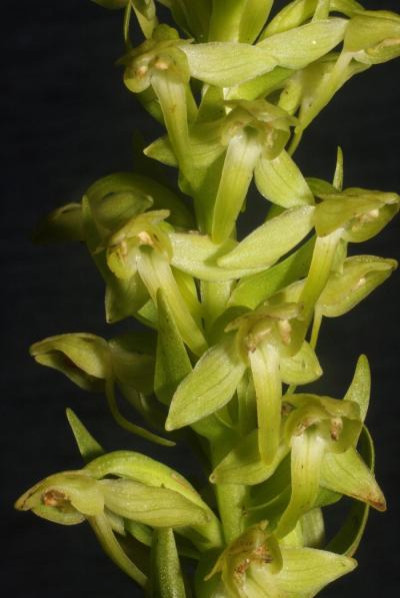Rarest Orchid Species Rediscovered, Hochstetter's Butterfly-Orchid Found In The Azores [PHOTO]

One of Europe’s rarest orchid species has been rediscovered in the Azores, a group of volcanic islands in the North Atlantic Ocean.
The discovery of the Hochstetter's butterfly-orchid confirms that the islands support three kinds of orchid species, rather than one. The findings, published in the journal PeerJ, explains how the rare species was found.
Using a combination of field and lab tests, a team of botanists decided to focus their studies on the Azores islands.
"Like many evolutionary biologists before me, I decided that an island system would be much simpler and would therefore yield less ambiguous results," lead researcher Professor Richard Bateman, from the Royal Botanic Gardens Kew, told the BBC.
At first the team was focused on two kinds of butterfly-orchids, but by using morphology and DNA sequences, they were able to distinguish between the widespread short-spurred butterfly-orchid and the rarer narrow-lipped butterfly-orchid. It was only when the team surveyed an orchid population on top of a volcanic ridge on the central island of Sao Jorge that they made a surprising discovery: a third species.
"[I] was astonished when our field expeditions revealed the existence of a third -- and exceptionally rare -- species, growing in such a dramatic, primeval landscape,” Bateman told the BBC. "I was even more astonished when my subsequent studies in herbaria and libraries showed that this exceptionally rare orchid, found only on one mountain-top on a single Azorean island, had in fact been found by the very first serious botanist to visit the Azores, in 1838."
The species, which was identified using data gathered from lab tests and other analytical techniques, was also found to be illustrated in a 1844 journal, but was later confused as belonging to a more-common Azorean species. The flower was found by German botanist Karl Hochstetter when he visited six of the nine Azorean islands in 1838.
The new species is exceptionally vulnerable and needs to be protected, Bateman said, pointing to how dairy farming and other development in the area threatens the forests that the orchids need to survive.
"This remarkable species languished unrecognized for 173 years," Bateman said in a statement. "It's rediscovery and recognition beautifully illustrate the value of integrating field-based and laboratory-based approaches to generate a modern monograph. This methodology both demonstrates that the species is genuine and allows us to make informed recommendations for its future conservation."
© Copyright IBTimes 2025. All rights reserved.





















